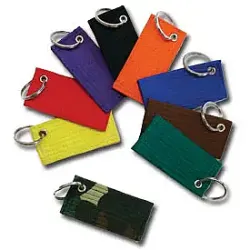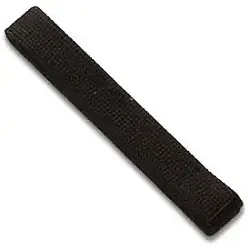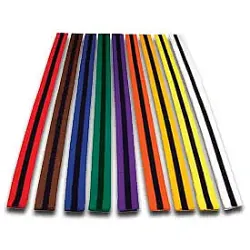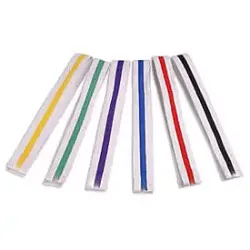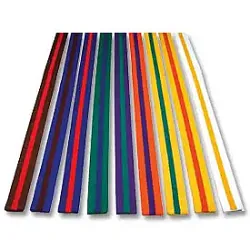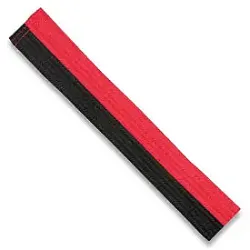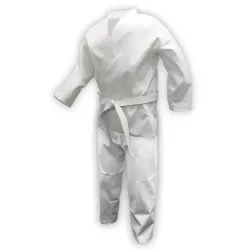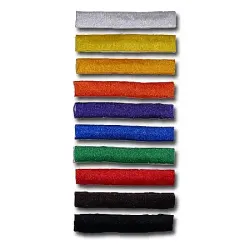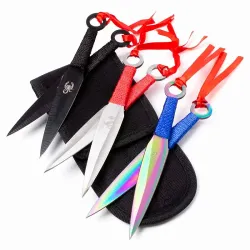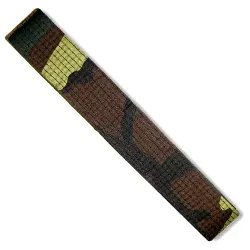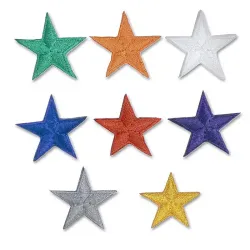Colored Rank Belts

DESCRIPTION
Karate did not start with color belts. In Okinawa, instructors taught in smaller, close knit settings, and progress was measured by time on the floor and the trust between teacher and student. When karate reached mainland Japan in the early 1900s, it met a newer idea that came from judo. Jigoro Kano, the founder of judo, wanted a visible way to show a student's level. He began with two colors. White for beginners and black for advanced students. As classes grew and the need for milestones increased, more colors were added between those two points. Karate teachers saw how well this encouraged steady progress and brought the system into their dojos too.
Today, most students start with white. It is a simple color with a clear message. Beginners bring an open mind and a willingness to learn. From there, schools often move through yellow and orange, then green and blue. These colors reflect a student's growing understanding and confidence. Purple and brown tend to sit near the top, showing maturity and control of the basics. Black belt is a big moment, but most instructors will tell you it is not the end. It marks the point where a student really starts to see how deep the art goes and how much there still is to learn.
There is no single global standard for belt colors or their exact order. That is part of the culture of martial arts. Different styles keep traditions in their own ways. Some dojos include a gold belt. Others use red belts before black. Some use stripes or degrees on the ends of belts to show steps within a color. If you are unsure which color to buy, it is smart to check with your instructor. The shared idea is always the same. Belts help students see their progress and stay motivated to keep training.
Our Colored Rank Belts are built for that long road. High quality stitching gives each belt a strong, lasting core that holds up to daily practice, frequent tying and untying, and regular washing. The dyes are bold and clear, so your belt looks sharp on the mat and in photos from promotion day. These are double wrap belts. That means they are long enough to go around the waist twice before you tie the knot, which is the standard in most karate and other traditional arts. The width is about 1.5 inches, a comfortable size that sits well over a uniform and stays put. The black belt is slightly wider at about 0.25 inch more, which gives it a classic look that stands out without being flashy. Belt length varies by size so you can pick the right fit for your height and waist.
You can choose from ten traditional colors. White, yellow, gold, orange, purple, blue, green, red, brown, and black. That range covers every step of a typical karate journey, and it also works for many other styles that follow similar ranking traditions. These belts are widely accepted in dojos that use traditional systems, and they blend cleanly with standard uniforms. Whether you are replacing a belt you lost, getting ready for a promotion, or picking up an extra for competition and class, you can count on these to look right and feel right.
Belts matter because they connect effort to a visible milestone. For kids, the next color can be a huge motivator. It gives them a clear goal to work toward and a reason to practice at home. Parents see the difference when a child ties on a new belt and stands a little taller. Adults feel it too. Even after a long day at work, knowing that a test is coming can push you to make it to class. Passing that test and tying a new belt is a simple act, but it carries a lot of pride and a sense of belonging.
There is also a bigger story behind why belts became so common. Once judo popularized the idea, other arts saw how useful it was. Taekwondo in Korea adapted color belts with its own order. Brazilian jiu jitsu designed a system with fewer colors but with stripes to show progress between major ranks. Aikido and other Japanese arts found ways to make belts fit their culture too. Karate embraced color ranks early and kept them as the art spread to schools, universities, community centers, and dojos all over the world. The belt tied at your waist today links you to a long chain of teachers and students who worked hard before you and will continue after you.
Practical details still matter, and we pay attention to them. The stitching on these belts is designed to keep its shape through daily use. The ends stay neat, the knot holds, and the belt sits evenly over the jacket without feeling bulky. The colors are clear and consistent, which is important when a class lines up by rank. The double wrap design helps the knot lock down so it will not slip during drills, pad work, kata, or partner practice.
Students and instructors often keep a spare belt in a gym bag, and these make that easy. If you forget your belt at home, or if yours gets soaked in a summer class, it is useful to have a backup. Schools also keep extras on hand for promotion ceremonies. A clean, crisp belt on test day feels special. It marks the moment and becomes part of a memory that stays with the student for years.
You might hear the word obi used for belts in Japanese arts. That is the traditional term for a belt that secures a uniform. In karate, the obi is tied in front with a square knot that sits flat and even. Students quickly learn to fold and store their belt with respect, since it represents the time and effort they have put into training. These small habits are part of what makes martial arts meaningful. The uniform and belt set the tone for class before the first bow of the day.
If you are buying a belt as a gift, it helps to check the color and the length with the student or their instructor. Since length depends on size, a quick confirmation avoids guesswork. If you are buying for yourself, pick the color that matches your current rank and the length that gives you clean tails after two wraps and a tight knot. If your school allows color choice between white or black uniforms, a bright belt color looks great with either and makes rank easy to see from across the room.
Most of all, remember what the belt represents. It is a simple piece of cotton, but it marks effort, patience, and steady improvement. It is the reminder you feel at your waist when you line up with your class. It is the small nudge you see in the mirror that says keep going. Our Colored Rank Belts are made to support that feeling. Strong, clear, traditional, and ready for daily training. Tie one on, train hard, and let the color tell your story as you earn the next step.
Colored Rank Belts Highlights
- Extremely durable with high quality stitching for long belt life
- Available in 10 colors: white, yellow, gold, orange, purple, blue, green, red, brown, and black
- Accepted by dojos that follow traditional ranking systems
- Belt length varies by size for the right fit
- Double wrap style ensures a secure hold during training
- Standard 1.5 inch width, with black belt slightly wider for distinction
What colors are available for the Colored Rank Belts?
These belts come in 10 traditional colors: white, yellow, gold, orange, purple, blue, green, red, brown, and black. If you are looking for striped belts or other varieties, you can find them here: Karate Belts.
Are these belts suitable for both kids and adults?
Yes. The Colored Rank Belts are available in a full range of sizes, making them a good fit for children, teens, and adults who train in martial arts. The double wrap style ensures a secure knot for all ages.
What sizes do the belts come in?
Sizes run from 0 through 7, which covers most children and adults. If you need a longer option, you can find extended sizes in our plus size rank belts here: Plus Size Colored Rank Belts.
Are the belts double wrap or single wrap style?
These are double wrap belts. That means they are long enough to wrap around the waist twice before tying, which is the standard in most martial arts schools.
How wide are the Colored Rank Belts?
The belts are approximately 1.5 inches wide. This gives them a comfortable fit that sits neatly on the uniform without feeling bulky.
Is the black belt different from the other colors?
Yes. The black belt is slightly wider, measuring about 0.25 inch more than the other belts. This gives it a distinct look that reflects its advanced status.
How should I wash and care for my karate belt?
Most students avoid frequent washing of belts to preserve their color and stitching. If you do need to clean your belt, hand wash it gently in cold water and hang it to air dry. Avoid bleach and harsh detergents.
Are these belts accepted in all martial arts schools?
These belts are designed to match traditional karate ranking systems and are accepted in most dojos. Since some schools follow slightly different color progressions, it is always best to check with your instructor before ordering.
- We Ship Fast! Most orders ship within the same day (excluding weekends & holidays).
- Free Shipping on Orders Over $35
- $6.95 Flat-Rate Shipping on Orders Under $35
- California Consumers:
 WARNING: Cancer and Reproductive Harm - https://www.p65warnings.ca.gov/
WARNING: Cancer and Reproductive Harm - https://www.p65warnings.ca.gov/ - Questions? Email Service@KarateMart.com
SIZE CHART
| Size | Inches (Approx) | Clothing Size | Height | Weight |
|---|---|---|---|---|
| 0 | 83" | Child 6-8 | 4'1" - 4'4" | 55 - 70 lbs. |
| 1 | 87" | Child 8-10 | 4'5" - 4'8" | 70 - 90 lbs. |
| 2 | 94" | Child 10-12 | 4'9" - 5' | 90 - 110 lbs. |
| 3 | 102" | Adult Small | 5'1" - 5'4" | 110 - 140 lbs. |
| 4 | 110" | Medium | 5'5" - 5'8" | 140 - 165 lbs. |
| 5 | 118" | Large | 5'9" - 6' | 165 - 190 lbs. |
| 6 | 126" | X-Large | 6'1" - 6'4" | 190 - 215 lbs. |
| 7 | 134" | XX-Large | 6'5" - 6'8" | 210 - 235 lbs. |
REVIEWS (2)

KarateMart Response: Thank you so much Nikki! I really appreciate your support and for taking the time to write such a detailed review! That means a lot to us! I hope you have a wonderful week!"






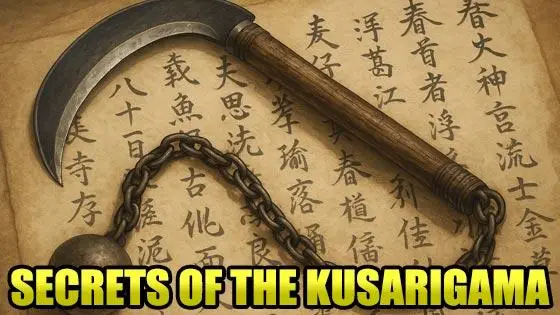

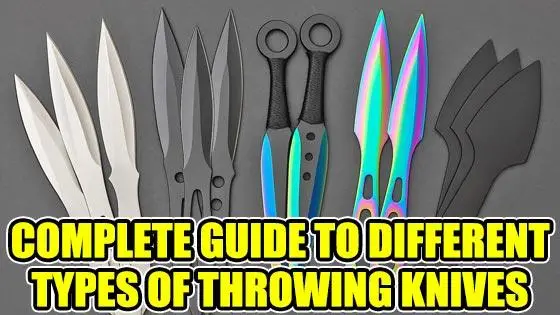
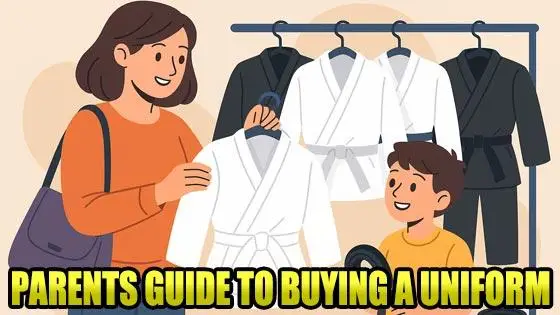

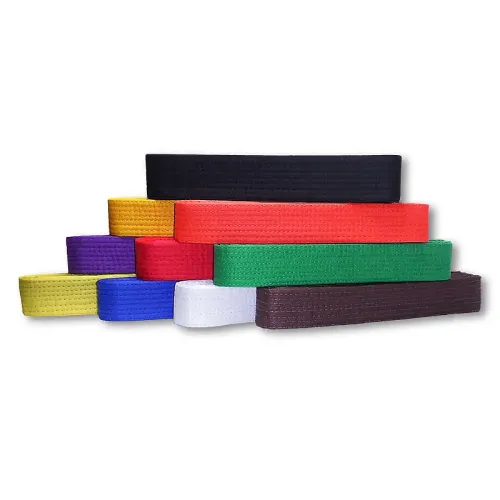


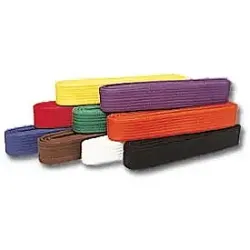
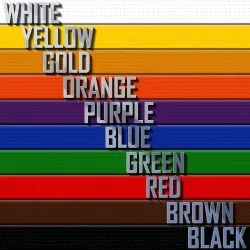

 (6)
(6)